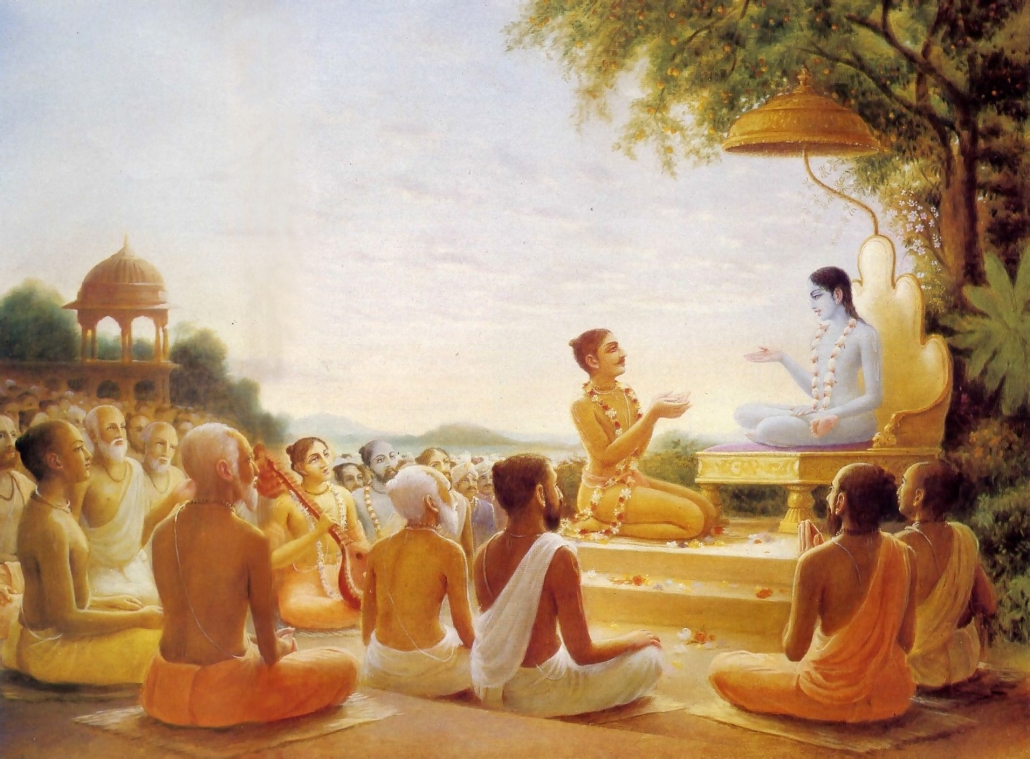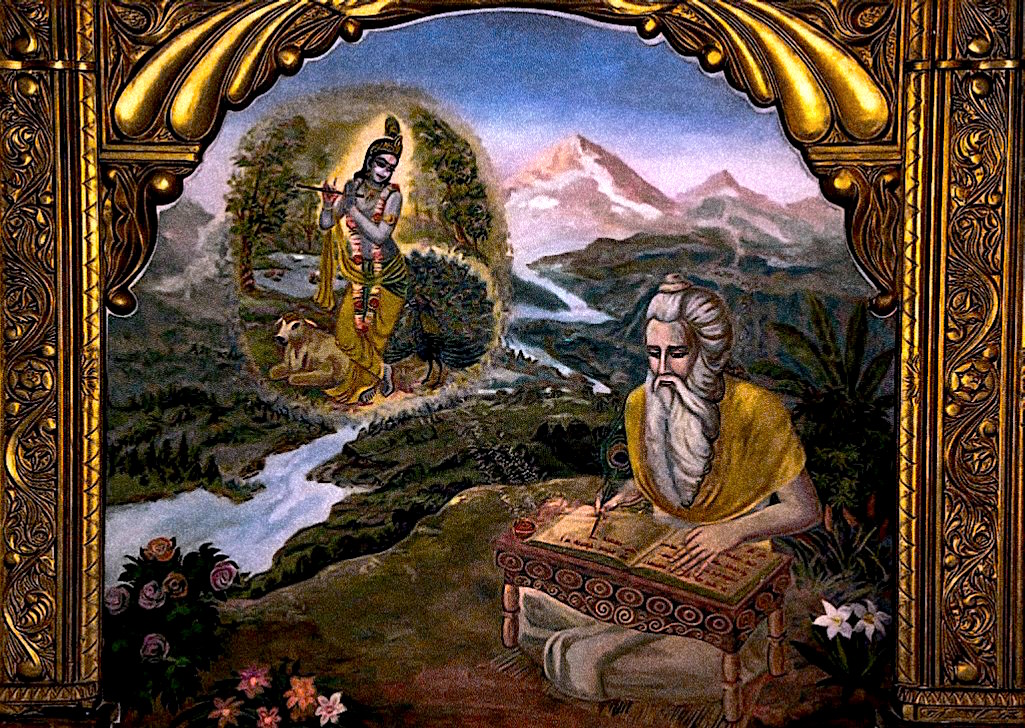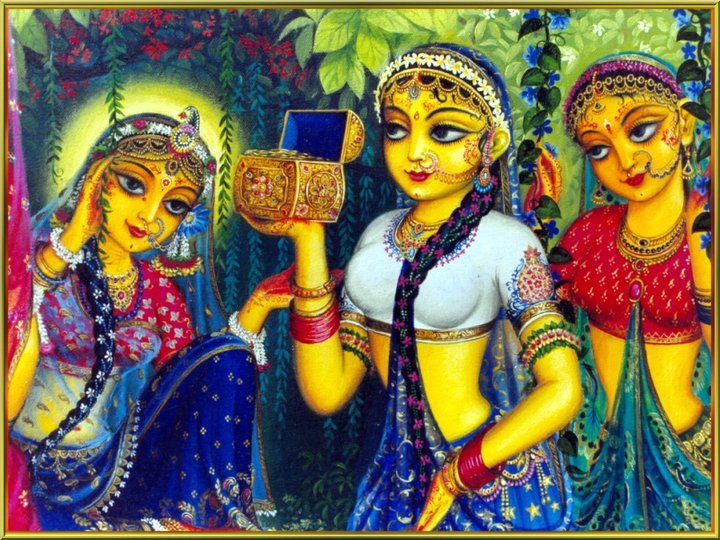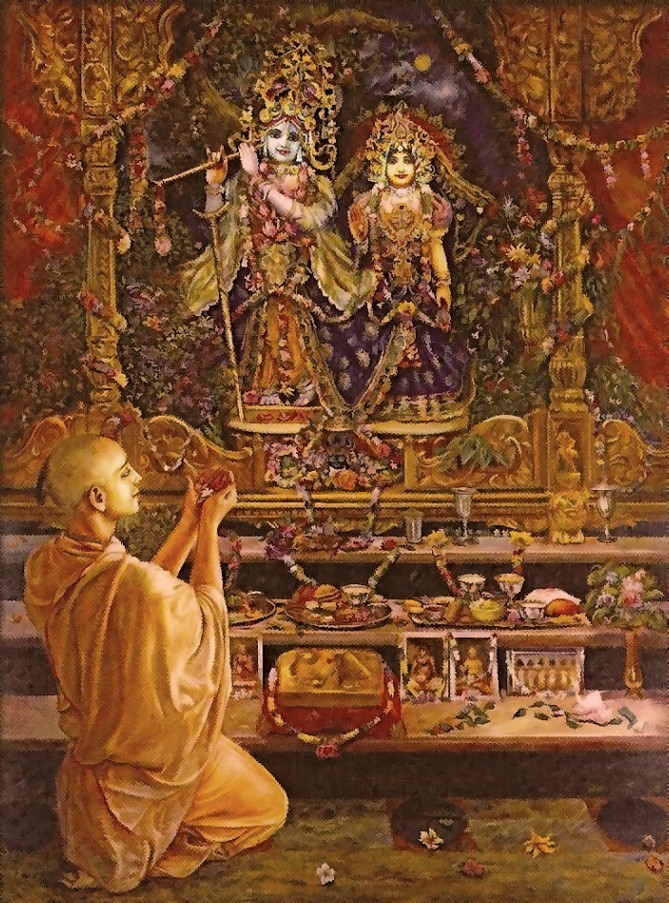Mahanidhi Madan Gopal Das
Srimad Bhagavatam is known as the “king of all spiritual books” (Grantha Raja) for good reason. Within this divinely immaculate, tri-guna-free, spiritual sastra, the amalapurana, one will find all the sweet, majestic and beautiful truths about the sadhana and sadhya (daily practices and final goal) of GaudiyaVaisnavism.
In the most wonderful sastra, Sri CaitanyaCaritamrita, Sri Krishna DasaKaviraja has mercifully summarized the teachings of CaitanyaMahaprabhu and the six Goswamis of Vrindavana. To prove these truths, he cites key Bhagavata verses throughout his treatise, which the Goswamis themselves have also discussed in their voluminous works.
To highlight its importance for all devotees of Sri Caitanyadeva and Radha-GovindaYugala, the same Bhagavatam verse is quoted once, twice or even four times in the Sri CaitanyaCaritamrta.
With the grace of Sri Advaita Prabhu, Sri Guru and the Vaisnavas, the “Beautiful Truths of Bhagavata” series will focus on these Bhagavatam verses which clearly reveal the absolute truth about Sri Krishna, Sri Radha, Sri Guru, the Vaisnavas, Bhakti Sadhana, Sri Harinama and Krishna Prema.
* BEAUTIFUL TRUTHS OF THE SRIMAD BHAGAVATAM
By citing key verses and selected commentaries, this post discusses the identify, power and uniquely supreme position of the SrimadBhagavatam, the crown jewel of all transcendental tomes. Sincere sadhakas should learn and reflect upon these verses.
Absorbing, and implementing these truths will strengthen your faith, expand your joy, and double your enthusiasm to love, serve and respect all the humble servants of Sri SriRadha and Krishna.
Srimad Bhagavatam Maha Purana ki jai!
Why Bhagavata Is the Best Scripture?
dharmaḥ -projjhita-kaitavo ’tra, paramo -nirmatsarāṇāṁ -satāṁ
vedyaṁ –vāstavam- atra- vastu, śivadaṁ -tāpa-trayon-mūlanam
śrīmad-bhāgavate- mahā-muni, kṛte -kiṁ -vā –parair- īśvaraḥ
sadyo- hṛdyava-rudhyate ’tra, kṛtibhiḥ- śuśrū-ṣubhis- tat-kṣaṇāt
“Bhagavan Sri Krishna becomes immediately captured in the heart of anyone who hears the Srimad Bhagavatam. This does not happen with other spiritual books. The Bhāgavatam alone, manifested by the Sri Krishna Himself, presents the true and permanent objective of human life which can be understood by unselfish persons.
“The Srimad Bhagavatam bestows auspiciousness everywhere and frees one from the miseries of material existence. Only the Bhagavata teaches the process of attaining that highest objective of life which is completely devoid of all material goals and liberation.” (Srimad Bhagavatam 1.1.2; Caitanya Caritamrita. 1.1.191, 2.24.100, 2.25.149)
Sri VisvanathaCakravartipadatika:
By illustrating what is beneficial and unbeneficial for the jīva, the Bhagavata gives bliss to all the listeners and enables everyone to fully achieve the highest objective of human life. Simply by hearing/reading the Bhagavata, Sri Krishna (īśvaraḥ), the shelter of everything, is immediately captured (avarudhyate) in one’s heart.
Even without faith, as soon as one hears Bhagavata, Sri Krishna enters the heart. Besides that, Sri Krishna becomes very happy and filled with prema when one hears the Bhagavata. Repetition of the Sanskrit word atra (line 1 & 3) stresses that this benefit is not attained by any other scripture or other spiritual practice (kiṁ –vā- paraiḥ).
What happens when one understands the teachings of the Bhagavata? It gives the topmost auspiciousness (śivadam) by making one an eternal premibhakta of Bhagavan Sri Krishna, and liberating one from the material world. Sri VisvanathaCakravartipadaki jai! Srimad Bhagavatam ki jai!
Bhagavata is the Rasa Nectar Essence of Vedanta
sarva-vedānta-sāraṁ -hi, śrīmad-bhāgavatam- iṣyate
tad-rasāmṛta-tṛptasyā, nānyatra- syād- ratiḥ- kvacit
Śrīmad-Bhāgavatam is accepted as the essence of all Vedanta. One who experiences satisfaction from tasting the nectar sweet rasas of the Bhagavata is never attracted to any other literature.
(Srimad Bhagavatam 12.13.15/ Caitanya Caritamrita 2.25.146)
Sri JivaGoswami tika: Bhāgavatam is the form of pure rasa, the fruit on the desire tree situated in Goloka Vrndavana. (Krama Sandarbha 1.1.4-4)
Ten Subjects Make the Bhagavata a MahaPurana
atra- sargo- visargaś- ca, sthānaṁ –poṣaṇam-ūtayaḥ
manvantare-śānukathā, nirodho –muktir- āśrayaḥ
Śrīmad-Bhāgavatam describes ten subjects:
(1) Sarga: Creation.
(2) Visarga: Secondary creation.
(3) Sthāna: Proctection.
(4) Poṣaṇa: Mercy of Bhagavan Visnu/Krishna
(5) Ūti: Material activity.
(6) Manvantara: Conduct of the Manus.
(7) Iśānukathā: Lilas of Bhagavan’s various descents.
(8) Nirodha: Destruction of the universe.
(9) Mukti: Liberation.
(10) Āśraya: Shelter of Bhagavan Sri Krishna.
Comment: Bhagavan Sri Krishna is the one and only ultimate shelter of everything. The topics of Bhagavan Sri Krishna are primary, giving shelter to all others. (Srimad Bhagavatam 2.10.1.2/Caitanya Caritamrita Ādi 2.91)
jayati jana-nivāso, devakī-janma-vādo
yadu-vara-pariṣat- svair, dorbhir- asyann -adharmam
sthira-cara-vṛjina-ghnaḥ, su-smita-śrī-mukhena
vraja-pura-vanitānāṁ, vardhayan- kāma-devam
“Bhagavan Sri Krishna is the ultimate resort of all living entities. Sri Krishna is known as Devakinandana and Yasodananda. Sri Krishna is the guide of the Yadu dynasty. With His powerful arms, Sri Krishna destroys all impious men and everything that is inauspicious. Sri Krishna’s blissful smiling face always increases the amorous desires of the Vrajagopis. May Sri Krishna be happy and completely glorious.” (Srimad Bhagavatam 10.90.48/Caitanya Caritamrita Mad 13.79)
Sri Visvanatha Cakravartipada tika:
If someone says, ‘Alas! Alas! What misfortune that Krishna did not continue to manifest His intimate pastimes down to the present time.’ To console such persons, Suka Muni composed this beautiful verse to conclude Krishna’s lilas.
The phrase jana-nivasa means that Syamasundara Sri Krishna and all His intimate associates in nara-lila are living right now on the earth planet. The word jayati, “Krishna is eternally victorious”, is in present tense, which means that Sri Krishna is eternally present in the divine dhama of Vrndavana; in His divine names; and in the recitation of His glories.
The phrase kāma-devam means that Krishna is the brilliantly effulgent transcendental embodiment of spiritual desire and amorous love. With His blissful smiling face Sri Krishna forever increases the divine amorous desires (vardhayan- kāma-devam) of the damsels of Vraja and the cultured ladies of Mathurā and Dvārakā, who are completely attracted to Krishna.
Thus, with this verse, Suka Muni establishes that all of Krishna’s lilas described in the Tenth Canto i.e. Vraja, Mathurā and Dvārakā are all eternal!
Srimad Bhagavatam ki jai! Seeing Krishna lilas with prema locana ki jai! Jai Jai Sri Radhe!





